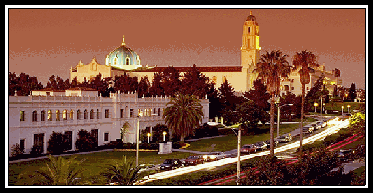
MANAGERIAL ECONOMICS
 |
| Spring 2015 |
 |
Economics 373 MANAGERIAL ECONOMICS |
|
|
|
| | HOME | SYLLABUS | CALENDAR | ASSIGNMENTS | ABOUT PROF. GIN | |
|
B. Oligopoly and Firm Architecture 1. Characteristics a. Few sellers b. Homogeneous or differentiated product c. Entry is difficult
. 2. Classification
Ex. - . 3. Sources of oligopoly a. Huge capital investments and specialized inputs required b. Patents c. Brand loyalty d. Control of raw materials or other inputs e. Government franchises f. Economies of scale
. . . . . . . . . . 4. Measures of market power a. Concentration ratios
. . . b. Herfindahl Index . . . . . c. Theory of contestable markets
. 5. Oligopoly models a. Cournot model
. . . . . . . . . b. Kinked demand curve model
. . . . . . . . .
. c. Cartel arrangements
. . . . . . . . . . d. Price leadership
- Dominant firm sets price to maximize profits - Other firms (followers) sell all they want at that price - Dominant firm supplies the rest of the market . . . . . . . . . . 6. Profitability and efficiency implications of oligopoly a. Porter's strategic framework (Five Forces) . . . . . .
(1) concentration in the market (2) nonprice vs. price competition (3) exit barriers (4) ratio of fixed costs to total costs (5) switching costs (6) growth rate of the industry . b. Efficiency implications (1) Problems (a) Price too high, profits can persist in long run (b) Do not produce at lowest point of LAC (c) P > LMC at equilibrium => not enough of the product is produced (d) Differentiated product leads to resources used for advertising and model changes . (2) Benefits (a) Economies of scales preclude production under perfect competition (b) Large size and profits allow funds for research and development (c) Advertising provides information to consumers (d) Product differentiation satisfies different consumers' tastes . 7. Sales maximization model
. . . . . . . . . .
a. Firm may feel more secure b. Better deals on inputs c. Lower interest rates when borrowing money d. Better image with consumers, employees, and suppliers e. May have a relationship between executive salaries and sales . 8. Architecture of the ideal firm
a. Concentrates on core competencies and outsources all other activities
. b. Is a learning organization
. c. Operate extremely efficient factories and plants
. d. Seamlessly combines physical with virtual
. e. Real-time enterprise
. 9. Miscellaneous topics a. Global oligopolists
. b. The creative company
. c. The virtual corporation
. d. Relationship enterprises
|